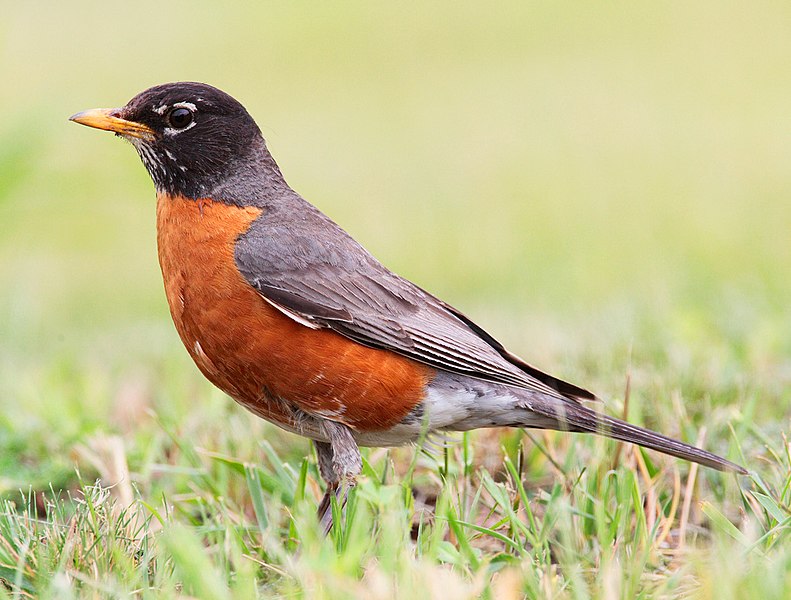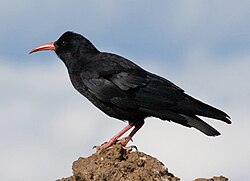The study, performed north of Quebec City by a quintet of Canadian researchers, examined the habitat preferences of 23 adult female caribou over a 2-year study period. The researchers were interested in determining whether caribou mothers' habitat selection could affect their reproductive success by exposing calves to potential predators. The habitat in question--located within Quebec's Charlevoix region--varied widely, containing areas that were relatively undisturbed, some that had recently been logged ("cutovers"), and others that had previously been logged but where the vegetation had just begun to grow back in ("non-regenerated areas").
(Caribou calf with radio-collared bull. Image courtesy of UNBC.)
All females were fitted with GPS collars, allowing the scientists to determine where the caribou were located--and, therefore, what type of habitat they were utilizing. Monitoring efforts were particularly intense during the spring calving period, since the researchers wished to capture calves and fit them with radio collars. While the habitat usage patterns of calves could be determined from their mothers' GPS signals, the radio collars were important for allowing researchers to monitor survivorship of juvenile caribou and, when the calves died, to locate their remains. In cases of calf mortality, the researchers examined both carcasses and the surrounding habitat in order to determine the cause of death.
Pregnant females all gravitated towards habitats located on upper slopes--areas where grey wolves (Canis lupus) were less likely to be found. The usefulness of this preference was revealed by the juvenile mortality data, which showed that only 1 of 22 predated calves died from a confirmed wolf attack. However, females that showed particularly high preference for these areas--in other words, those who utilized only this habitat rather than wandering up and down the slopes--were much more likely to lose their calves to predation. This is because the high-elevation areas were also frequented by black bears (Ursus americanus), which appeared to be responsible for the other 21 predation events (only 2 calves died of natural causes, bringing the entire death toll to 24).
(A black bear, one of the caribou's two main predators. Image courtesy of Wikipedia.)
The impacts of the anthropogenically modified habitat types were interesting. Calf mortality was not strongly related to active selection of cutovers, suggesting that logging--or, at least, use of recently logged areas--may not be particularly detrimental to caribou fitness. One potential reason for this is that cutovers have not yet been repopulated by moose, the presence of which brings an influx of wolves; at the same time, there is not yet enough food here to support foraging black bears. Not only are these sites relatively empty of predators, but they also provide good cover near the ground, giving young caribou a place to hide should they need it.
Calves were, however, more likely to be predated when their mothers did not avoid non-regenerated areas. This probably stems from the fact that these patches offered more sustenance to black bears, and were therefore more likely to contain caribou predators. There was also an interesting interaction between vegetation and the presence/absence of roads, such that calf loss was more common in areas with both high road density and few (or no) mature tree stands. Again, this is probably related to the fact that these habitats support more potential predators, as well as the fact that these same predators often use roads in order to move through the habitat more easily.
(Regenerating forest at a former logging site. Image courtesy of the NW Council.)
These findings suggest not only that individual variations in habitat selection affect reproductive success, but also that caribou may actually benefit from anthropogenic activities: The ungulates appear to be safest in the most human-disturbed areas, though the researchers suggest their results should be treated with caution because the sample size was relatively low. The study also highlights the interconnectedness of organisms at different "trophic levels," or positions within the food web. Variations in the abundance of vegetation impact moose, caribou, and black bears, while differences in moose and caribou populations affect both black bears and wolves. All of these organisms can, in turn, be affected by anthropogenic activities such as logging and the creation of roads. Thus, this work is an important reminder that the effects of humans can often be subtle, complex, and indirect.
---
Dussault, C., Pinard, V., Ouellet, J.-P., Courtois, R., and Fortin, D. 2012. Avoidance of roads and selection for recent cutovers by threatened caribou: fitness-rewarding or maladaptive behaviour? Proceedings of the Royal Society B 279:4481-4488.






